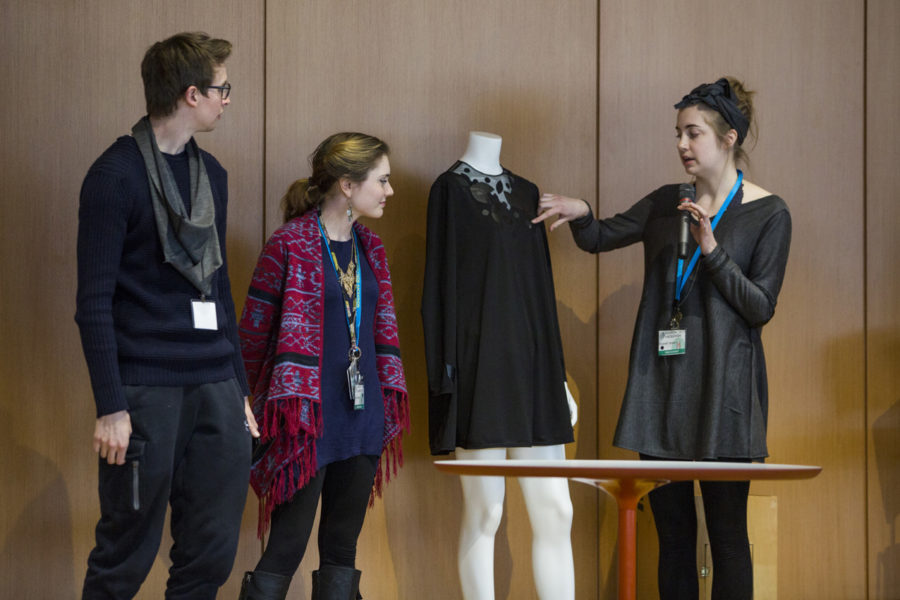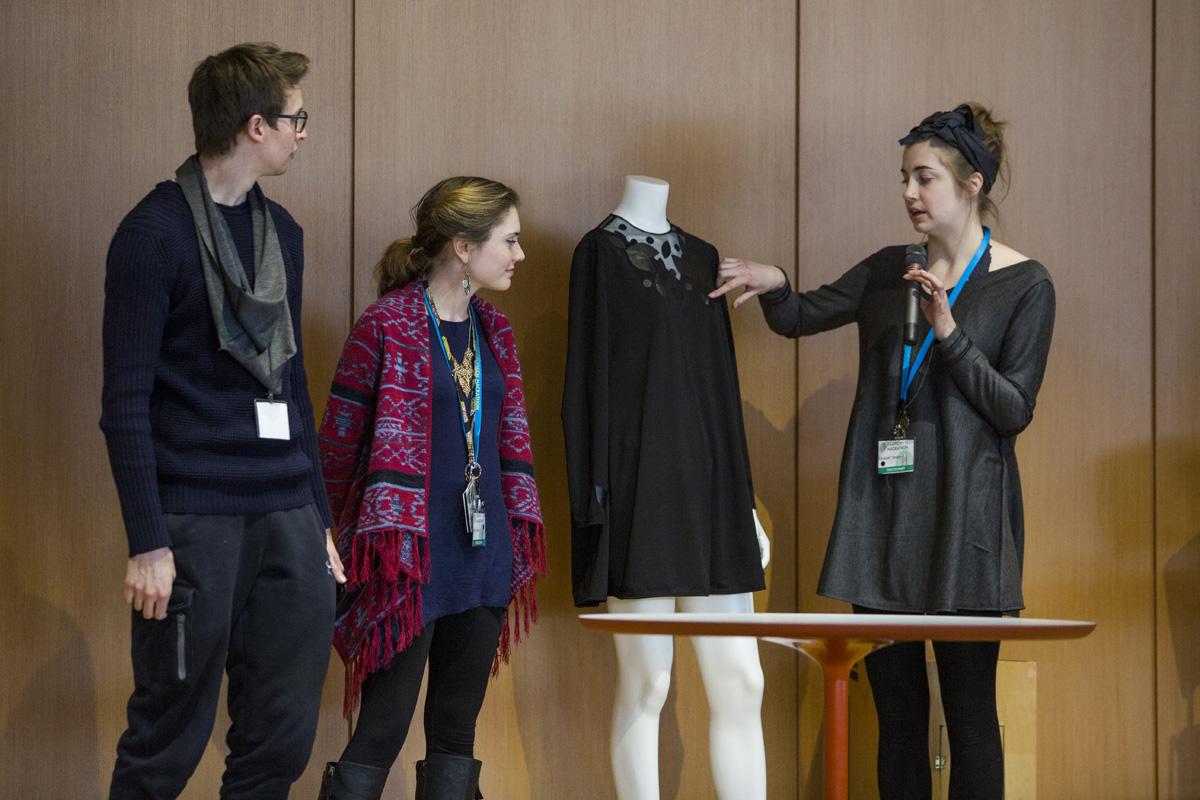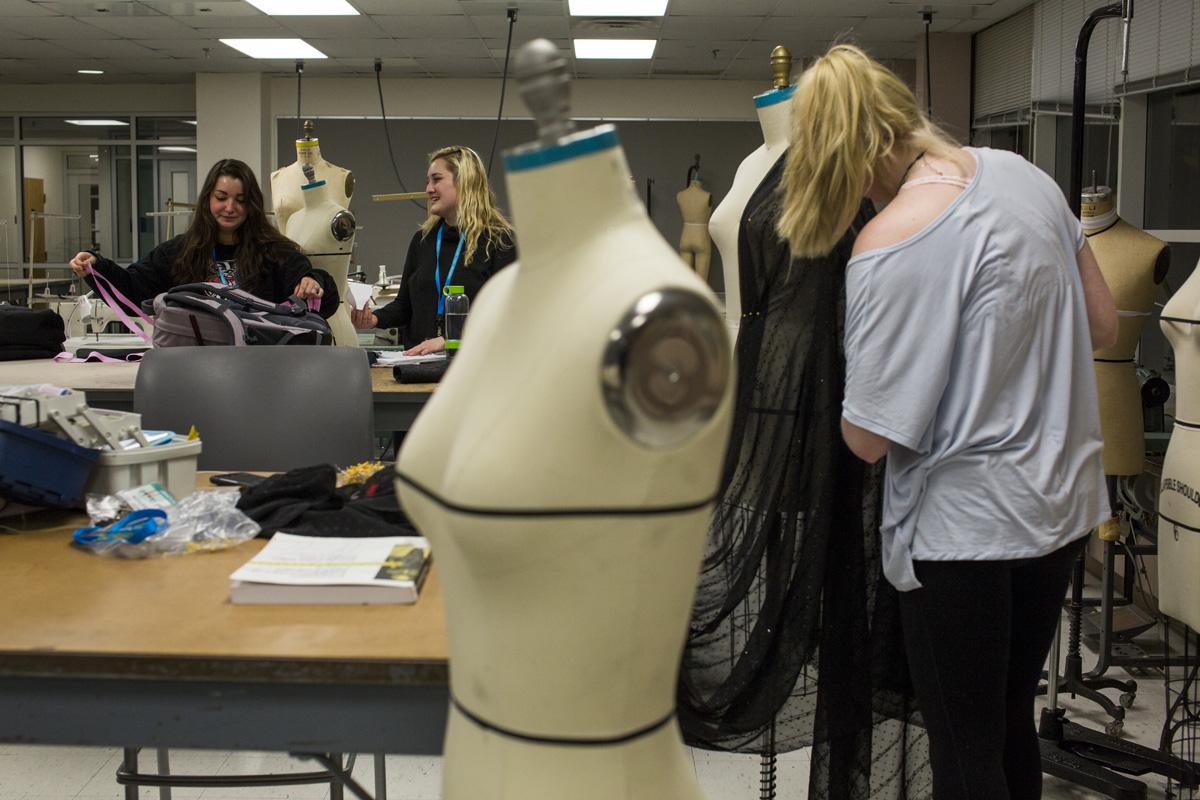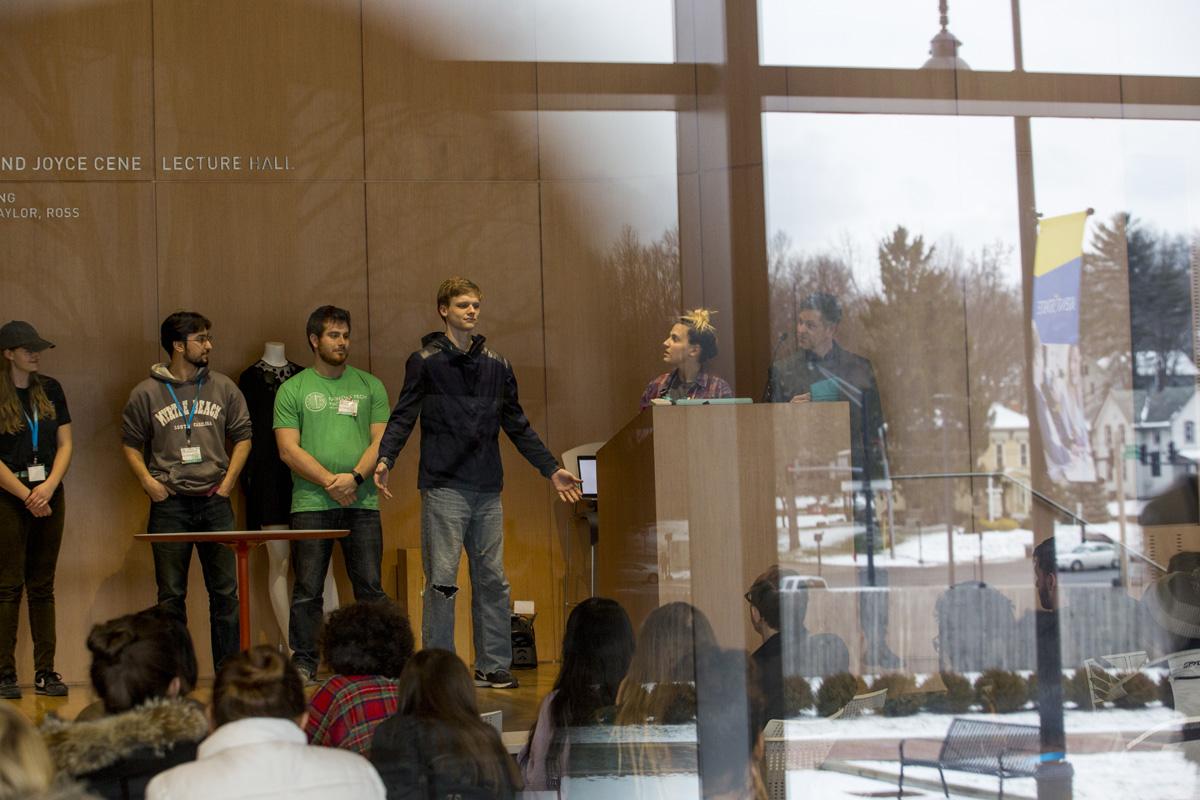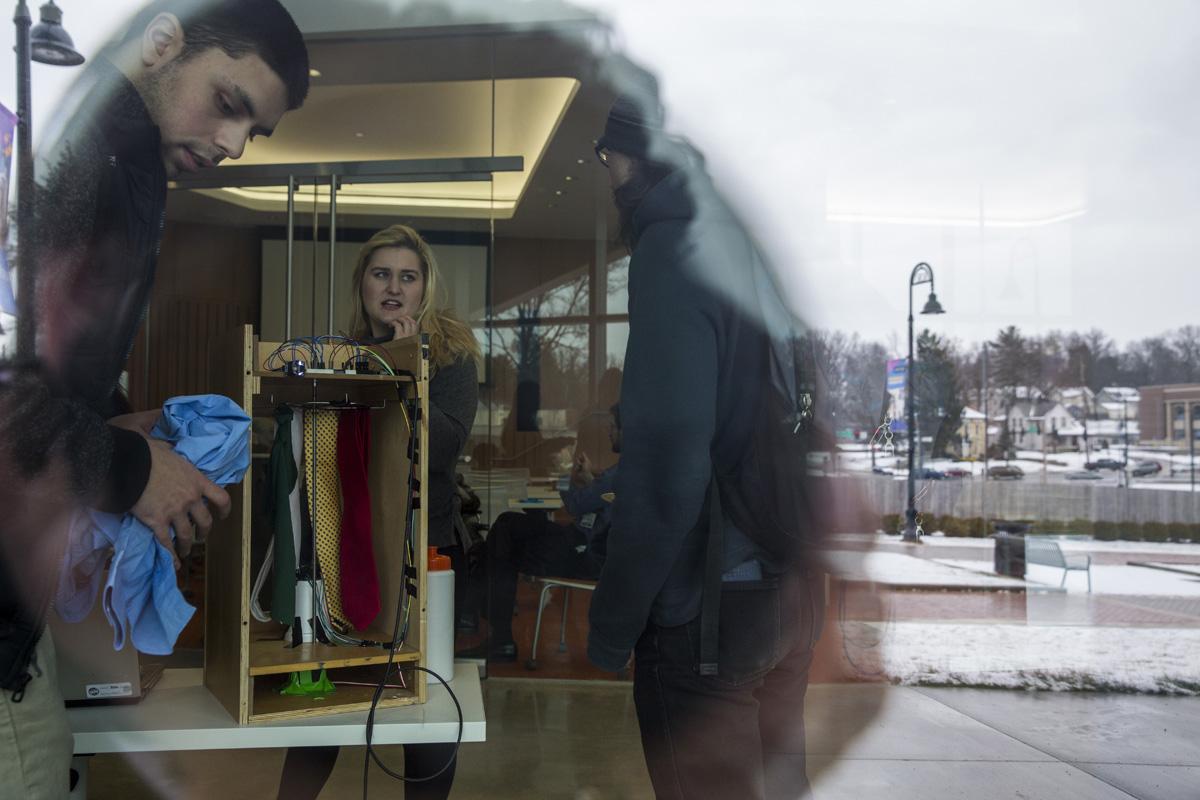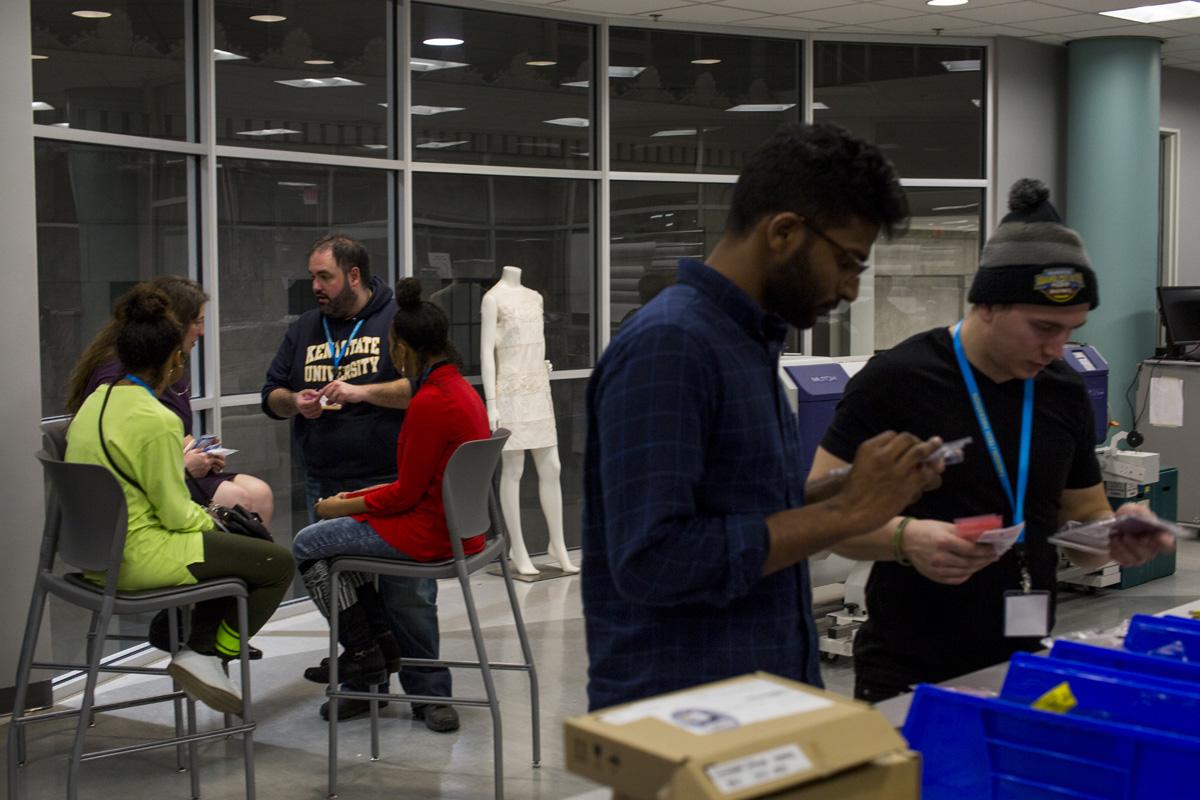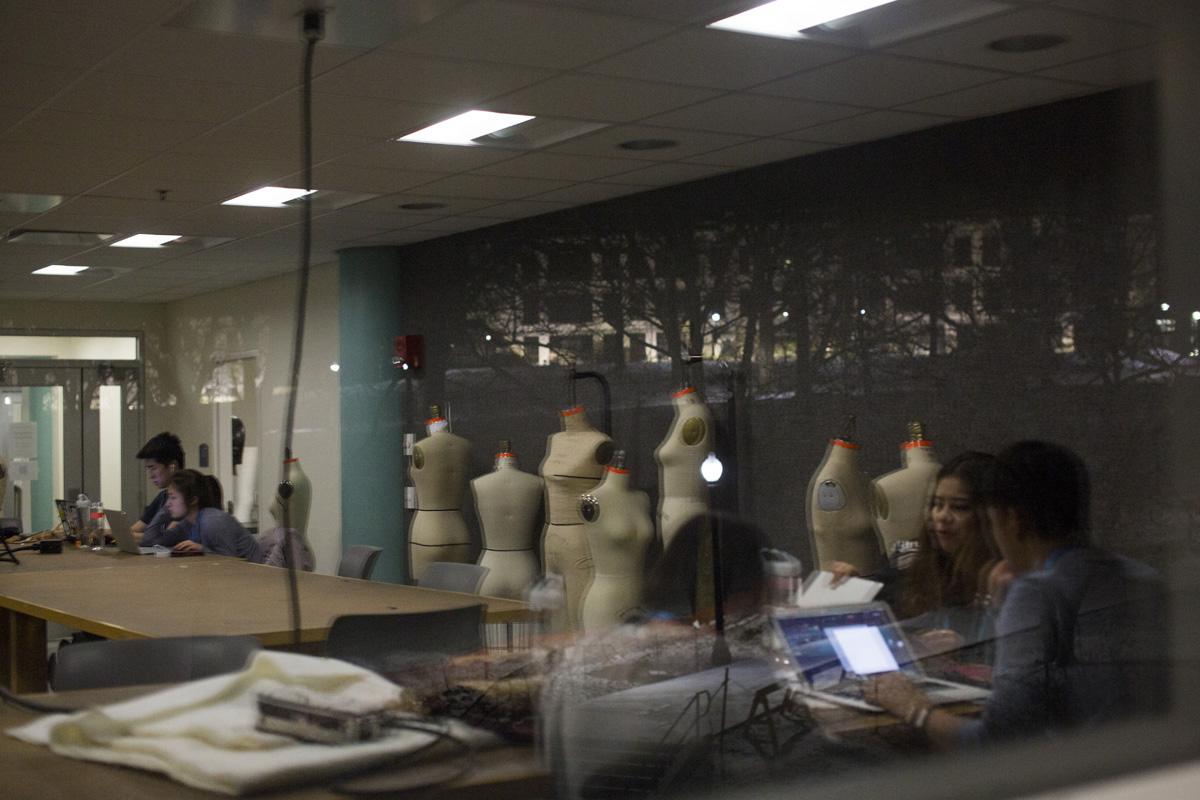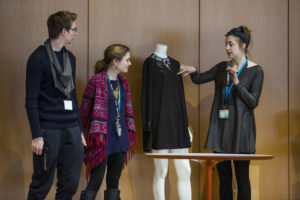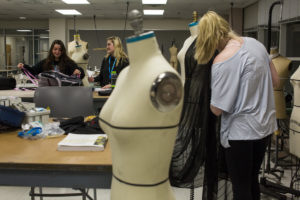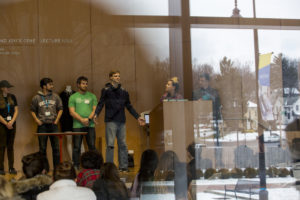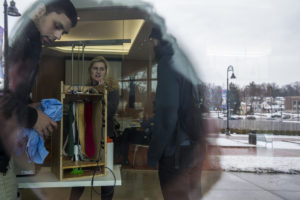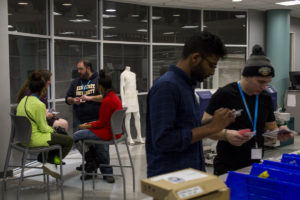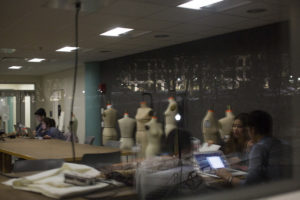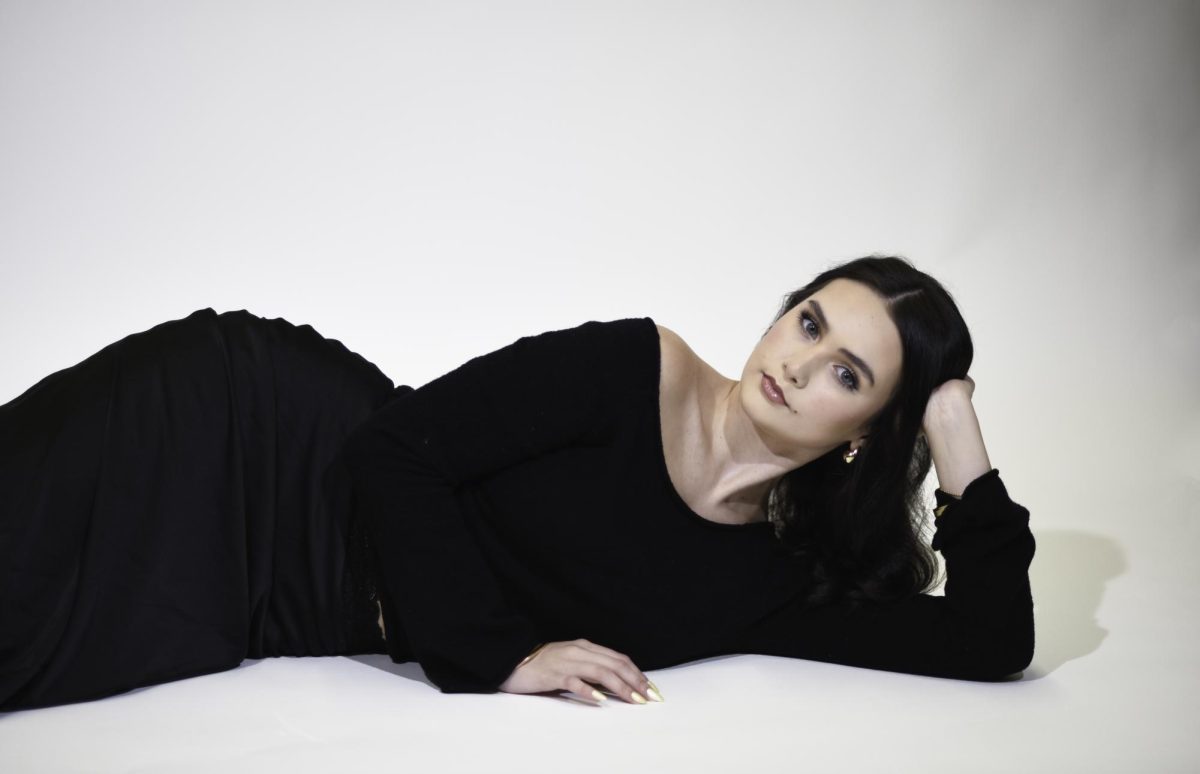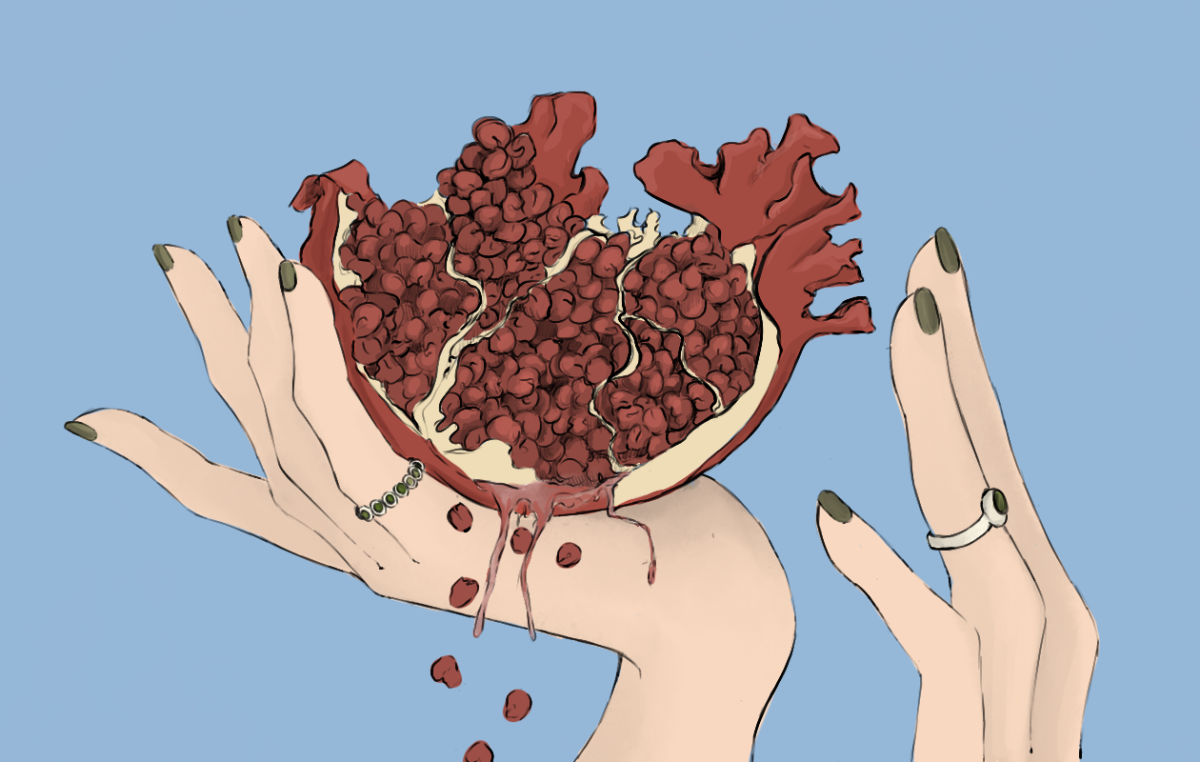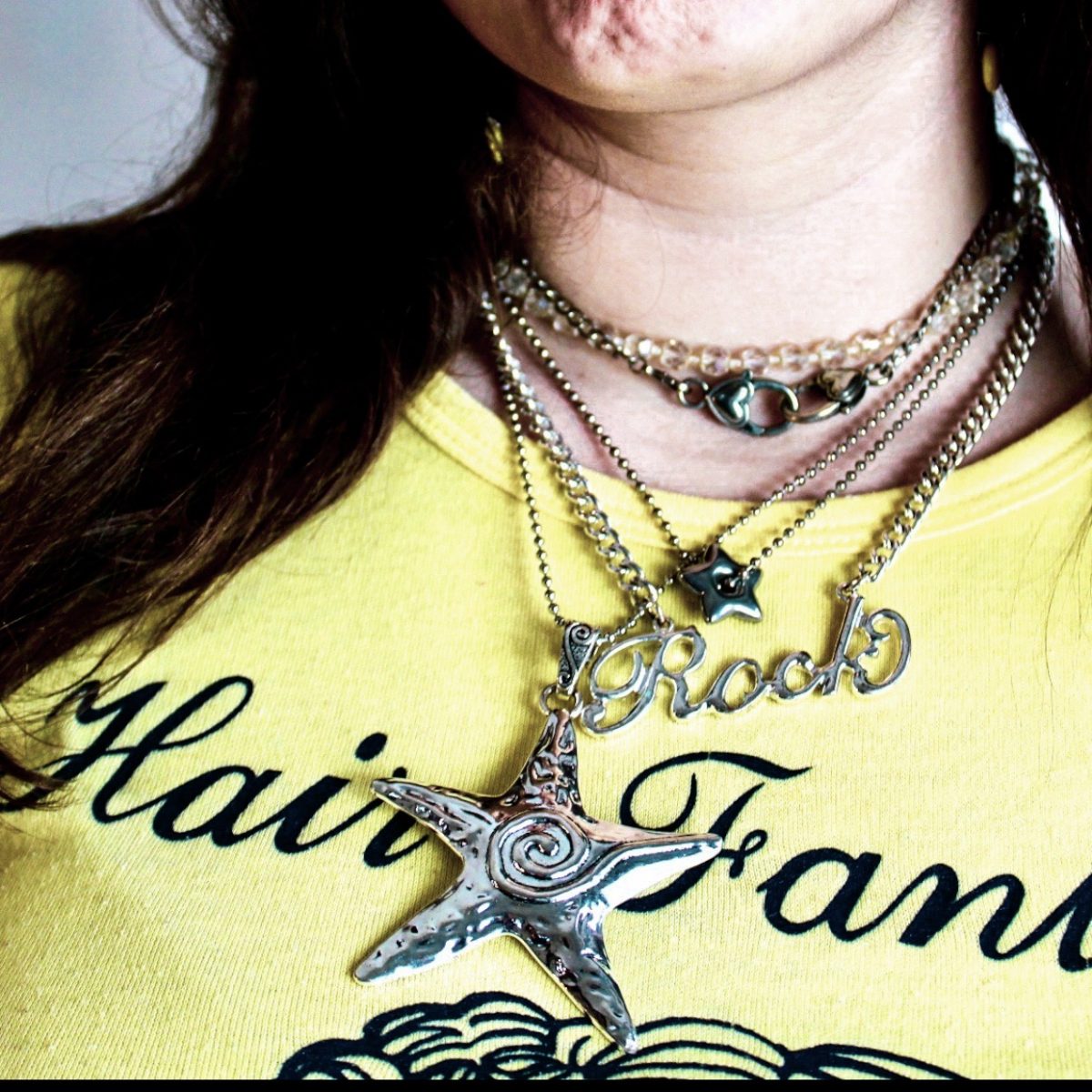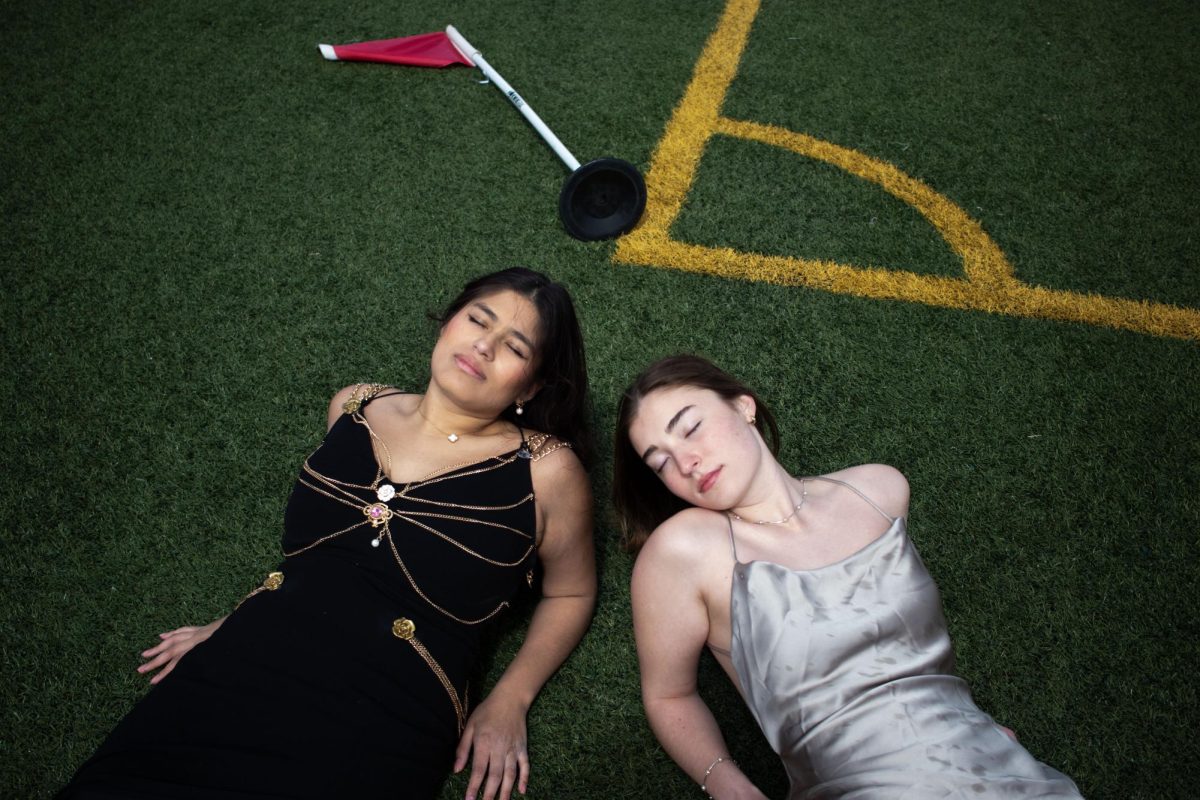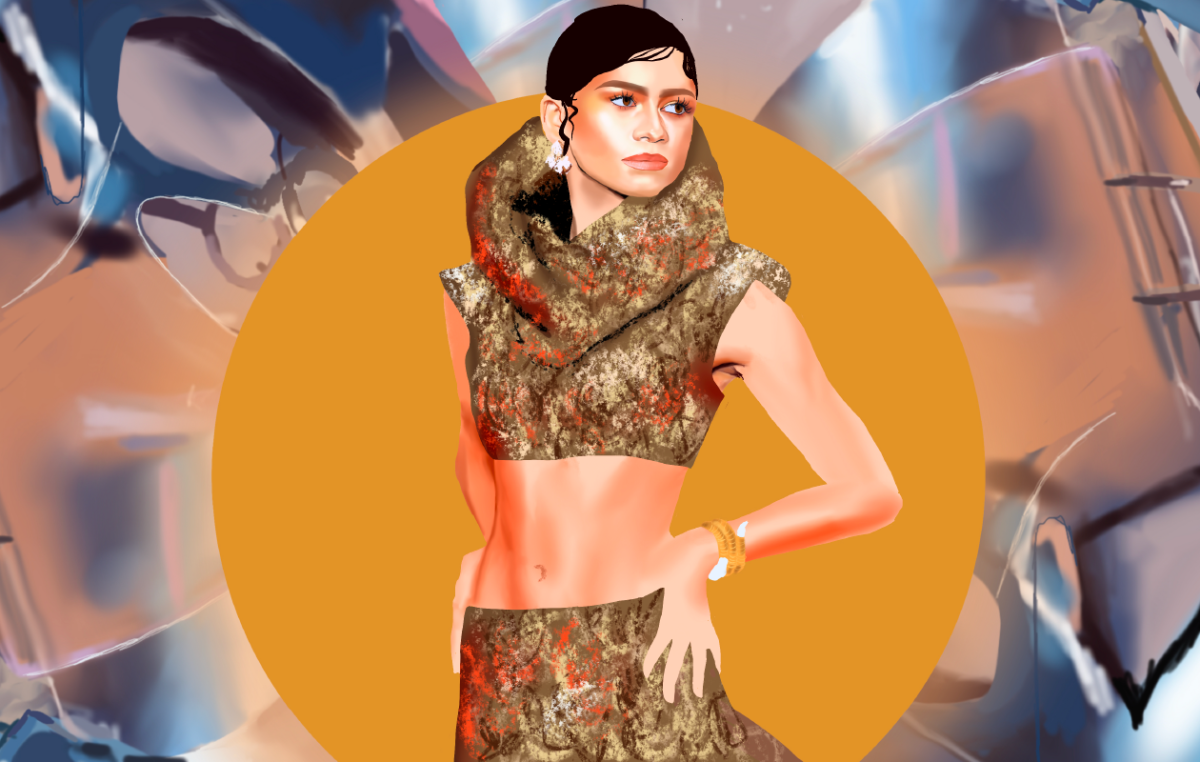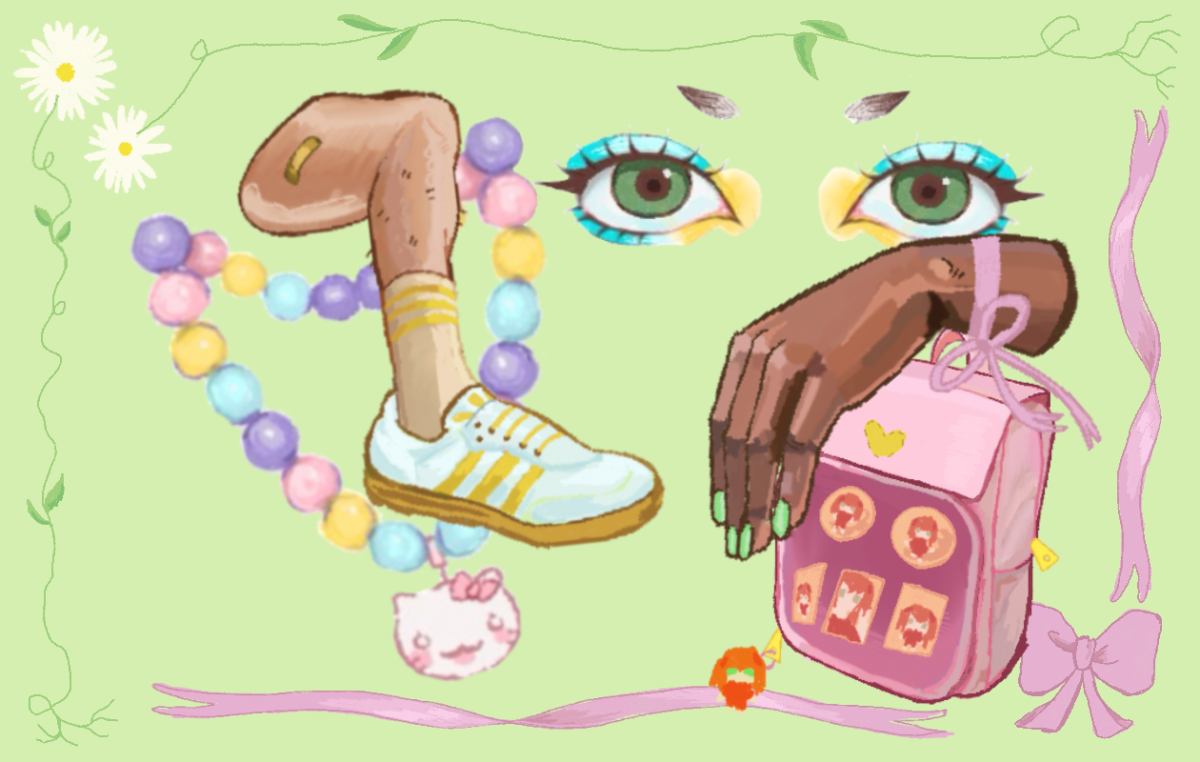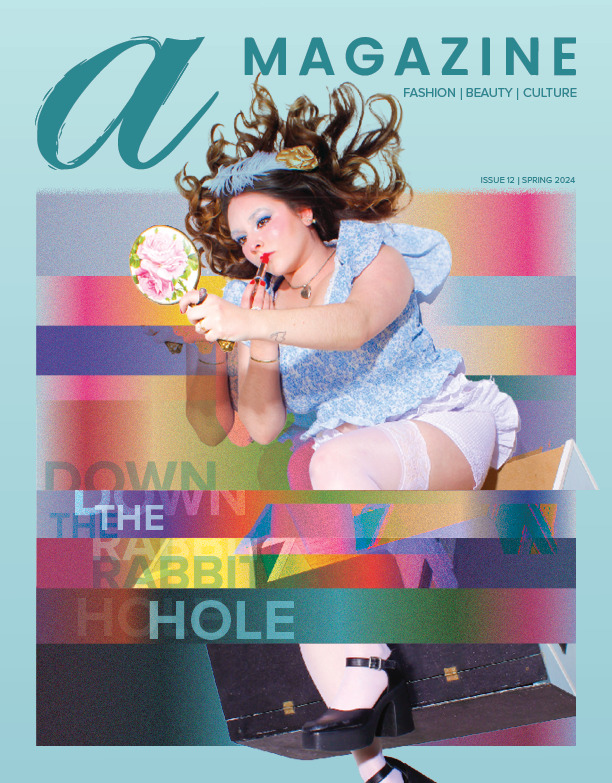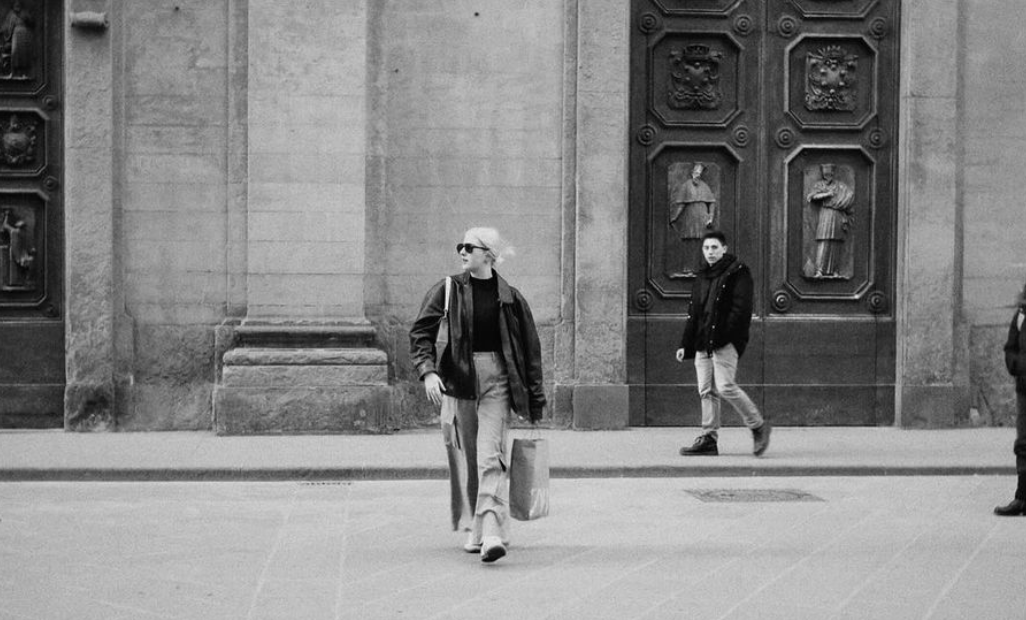Between buckets of fabric samples, micro-sized bluetooth chips and tall cups of black coffee are the students and faculty behind Kent State’s Fashion Tech Hackathon. The annual all-nighter weekend of cohesion and wearable technology provided an opportunity for those to test their skills and push boundaries.
The Fashion Tech Hackathon is a 36-hour weekend for students across the nation to build a piece of technology that incorporates fashion, whether it be a mechanical tie sorting machine or a jacket-turned-shopping bag for light travelers.
Participants are encouraged to interact with sponsors and professionals offering support during the late nights. Those with the most innovative projects are awarded one of four titles: creation of a new technology, advancement of an existing technology, use of technology in a creation of a new fashion project or tech advancement of the retail experience.
Students began the experience mapping out ideas that, essentially, provided a solution to a problem they’ve experienced in their own life. Olivia Kissinger, a senior fashion design major, explained why her group decided on producing a fashionable knee sleeve.
“We’ve all had knee problems at some point,” the group sighed. “And wearing a knee brace isn’t fashionable. It slides down throughout the day, and the velcro comes undone,” Kissinger said.
And this theme skyrocketed across the event. Attendees took personal affiliation with their designs, creating book bags actually long enough for fashion students, keeping the nape of their necks safe from the tap-tap-tapping of acrylic fashion rulers on their way to class. Some designers crafted a golden bracelet named Moon Flower, intended for tracking menstrual cycles.
One group of Kent State students identified their love of nature and hiking to create Abeona, a jacket equipped with an electronic map hidden in the sleeve. A soft, glowing-red light projects through the nylon, giving trails, altitudes, directional assistance, temperature and heart rate to the jacket-renter. Yep, Abeona’s hiking jacket not only crafted an unparalleled blend of technology and activewear, but also branded their hiking jacket for a tech-savvy audience that craves the fastest, newest and shiniest tech toys.
“We wanted to create a product and a brand to get it to the most complete stage as possible,” senior fashion designer major Jessica Musto said.
After being awarded the best creation of a new technology, the creators of Abeona explained their vision past the crafting and designing of the hiking jacket – keeping the jacket rentable to constantly update the technology and allow for the recycling of materials to produce a piece of technology for the nature loving and technology worshipping.
An additional winner of the stated categories included Hermes: A Helmet with Brains. The matte black winged helmet was created by graduate student Naser Madi. The idea? Create a paragliding helmet able to detect mental fatigue in those nearing the dangerous stage. Madi explained the impacts, lack of coordination and emergency response signals those depleting all adrenaline (like a paraglider) face. The design was awarded best commercial potential award presented by Alpha Lab Gear, as well as best advancement of existing technology.
For those seeking a more everyday wearable option to blur the lines between technology and style, An Eve Without Adam stood out amongst the participants. The group designed two tunic-style dresses to assist wearers in need of communication without the awkward advancement of texting.
An Eve Without Adams’ dresses include a day and night option – the day dress featuring a scoop-neck and open back in metallized grey and an open fit, whereas the night option utilized laser-cut appliques on the neckline and a form fitted a-line bodice in black. Their design featured two hidden sensors amongst dresses’ seams that when tapped together and held for three seconds, a text message is sent out. Their innovative technology is not limited to dresses; the group hopes the idea of natural movement (a sensor hidden in a wrist seam corresponds to a sensor hidden in a neckline) allows for the consumer to alert a friend when it’s too awkward to bring out a cell phone.
The group was awarded the best use of technology in a new fashion product, as well as the Fashion Student Organization’s award for most aesthetically pleasing design.
Between an Eve Without Adam and Abeona, the groups credited their wins to learning from past hackathons. Members chimed in laughing at how much they’ve learned in just one year from competing.
“This year was so much smoother. We were like, ‘We can make two dresses and still have time!’” sophomore fashion design major Elizabeth Tarleton said.
As for Abeona, the group of seniors said walking away with $1,000 was a great way to go out.
After a weekend of crouching over tiny circuits, stiffening fingers between sewing machines and racing back and forth between the Fashion School and the Center for Architecture and Environmental Design, the groups relaxed a bit in their seats at the thought of some much needed sleep.
For more information on the Fashion Tech Hackathon, please visit http://www.fashiontechhackathon.com/.

